Out of all the 20 or so daughters of Maharajah Jung Bahadur Rana perhaps the daughter with the most colorful personality was Jung’s second daughter from his Bada Maharani, the main consort, Hiranya Garva Kumari. Popularly known as Bagh ki Kanchi Maiya as she was the younger wife (kanchi) of Prince Dhirendra Bikram Shah of Bagh Durbar, first cousin of the crown prince, Princess Deep Kumari led a very eventful life. Her own elder half-sister Khadga Kumari, popularly known as Chirbiray Maiya, was the first wife of Dhirendra. They together brought about a regime change with their daredeviltry. Deep Kumari’s elder sister Lalita Rajya Luxmi Devi was married to Crown Prince Trailokya Bikram Shah and was the mother of the future king, Prithvi Bir Bikram Shah. Lalita Rajya Luxmi had to act regal whereas, as the younger sister with less responsibility, Deep Kumari could afford to act frivolously and still get protection from the powers that be for her wanton behaviour.
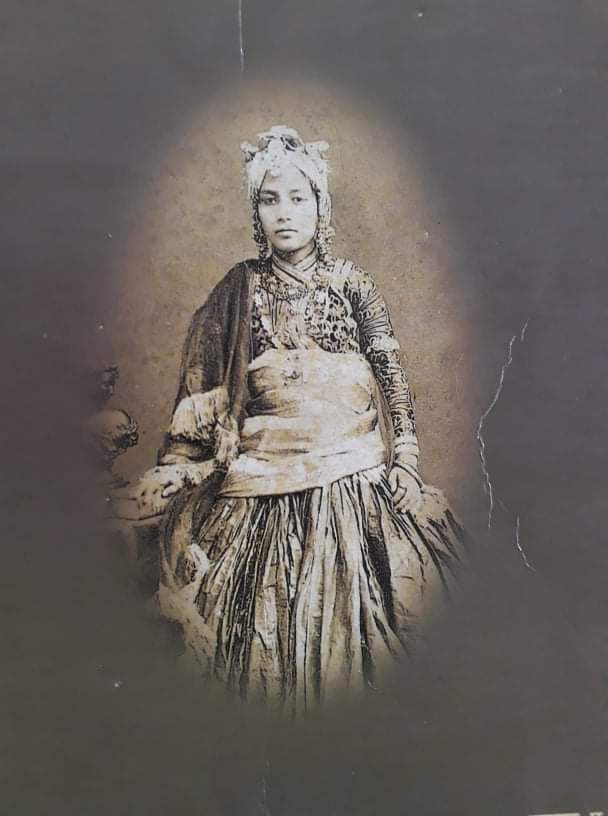
Bagh ki Kanchi Maiya, Princess Deep Kumari, a daughter of Maharajah Jung Bahadur
Deep Kumari’s mother was herself from the Chautaria stock, or royal collateral, and she was married to Maharajah Jung Bahadur Rana to help him atone for his transgressions against her family during the infamous Kot Massacre of 14 September, 1846 A.D. Hiranya’s two brothers the eldest Chautaria Fateh Jung Shah the chief minister at the time, and Bir Bahu Shah perished at the Kot Massacre. So too did Fateh’s son Khadga Bikram Shah. Now powerful, Jung wanted to make amends and regain the trust and friendship of the influential Chautaria clan. Letting bygones be bygones, Hiranya had reluctantly agreed to marry him at the prodding of her father Chautaria Pran Shah. This marriage went well contrary to expectation and Hiranya, as the Bada Maharani, was the main consort for the rest of the life of Jung Bahadur since their union in 1853 A.D. until his death in 1877 A.D. She performed a supreme sacrifice and went sati after his death.
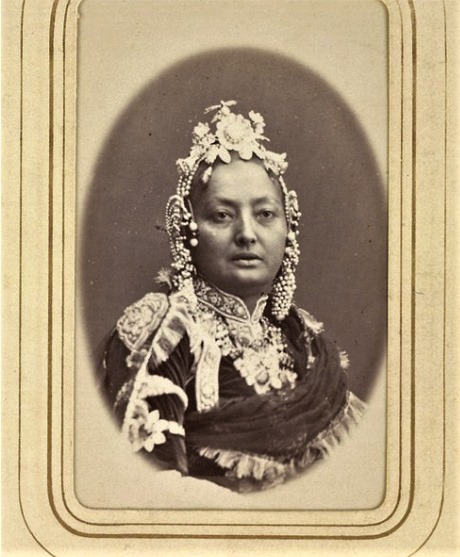
Bada Maharani Hiranya Garva Kumari, mother of Deep
Prince Dhirendra was the son of Mahila Sahebjiu Upendra Bikram Shah, the younger brother of King Surendra Bikram Shah of Nepal. He was an acclaimed tantric, a magical, mystic form of Hindu religion with emphasis put on occult rituals. Since Jung Bahadur Rana had taken over the post of prime minister the role of the monarch was sidelined. Upendra had already given an older daughter in marriage to a member of the Rana family, Bir Shumsher, who had been raised in the household of Prime Minister Jung Bahadur Rana at Thapathali Durbar. He was the eldest son of Jung’s youngest brother Dhir Shumsher. Following this matrimonial tie, Jung had proposed two daughters of his own as consort to Upendra’s son Dhirendra in quick succession and Upendra had accepted. Prince Upendra commissioned two temples at Pashupatinath in the name of his son and daughter-in-law, Dhirendreshwor Sibalaya and Deeprajluxmeshwor Sibalaya.
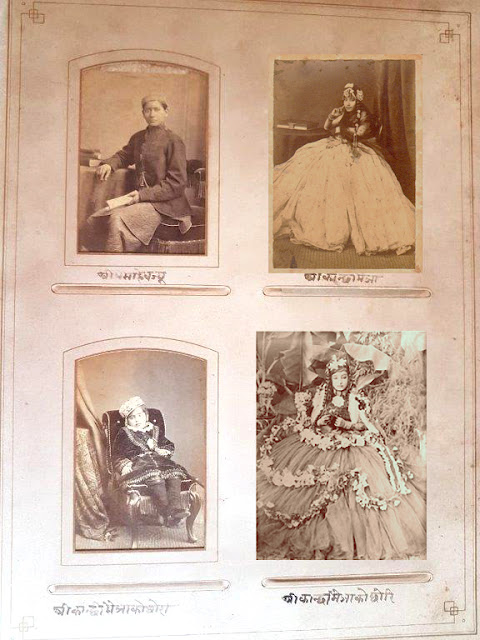
Prince Dhirendra Bikram Shah, Princess Deep Kumari and children
Deep Kumari was firstly involved in the conspiracy to get rid of prime minister Ranauddip Singh as he was a henpecked husband who was prone to heeding to his interfering wife Maharani Hari Priya against his own better judgment. His younger brother Dhir, always such a resolute figure behind him, had died. The House of Rana, created by his brother Jung, was now fractured into two opposing camps. One camp was led by Jung’s eldest son General Jagat Jung Rana trying desperately to get reinstalled in the Roll of Succession with support from Maharani Hari Priya, his sister Tara Rajya Luxmi, Senior Queen Mother of Nepal, and his siblings. The other camp was led by the sons of General Dhir Shumsher and supported by the Junior Queen Mother and Regent Lalita Rajya Luxmi, the step-sister of Jagat, along with her sister Deep Kumari, widow of Prince Dhirendra. It was just a matter of time who would strike first to eliminate the other side from the scene.
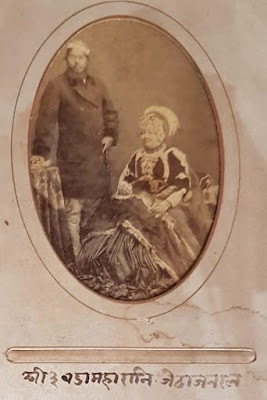
Maharani Hari Priya and nephew General Jagat Jung (These 2 photos illustrate the bonding in Camp#1)
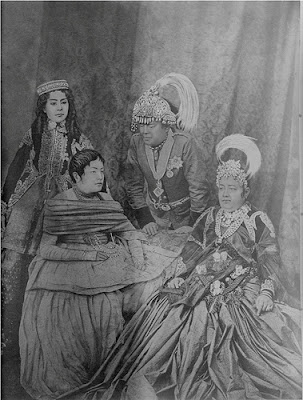
From left standing Khadga Kumari, P.M. Ranauddip,
sitting Crown Princess Lalit, Maharani Hari Priya
General Bir Shumsher was the eldest son of Dhir. Brought up in the household of Maharajah Jung Bahadur Rana and raised by Jung’s favorite wife Putali Maharani, Bir knew both these opposing camps well. He knew that should Jagat Jung prevail, it would mean the end of himself and his younger brothers. His younger half-brothers Khadga, Rana, Dev, Chandra had already come of age to assist Bir during all contingencies. Khadga Shumsher was very friendly with the two princesses Khadga Kumari and Deep Kumari. In fact, a few historians have surmised that he was having a love affair with Deep Kumari, a widow after only 5 years of marriage and the mother of a baby girl and a boy, who was only 20 years old at the time of her husband’s death in 1876 A.D. The same year too Deep Kumari lost her father Maharajah Jung Bahadur Rana and her mother who committed sati. These totally unexpected and heart-breaking bereavements must have played a significant role in bringing in periods of anxiety and depression resulting in bouts of reckless behaviour.
Deep Kumari was very much supportive of cousin Khadga in the conspiracy to assassinate prime minister Maharajah Ranauddip Singh. In fact, historians believe that without her active participation this assassination could not have been possible. When Khadga and his brothers had ventured to Narayan Hiti Durbar that fateful night of 22nd November, 1885 A.D., Bir was anxiously waiting at his residence in Bagh Durbar with Deep Kumari for the positive outcome of the sinister plan. No sooner than the news of success came, Bir swung into action to round up General Jagat Jung at Manahara Durbar and murder him. Rest of the sons and nephews of Jung Bahadur Rana along with the widowed Maharani Hari Priya and Senior Queen Mother Tara went to the British Residency at the dead of night to seek asylum. Deep Kumari had hurried to the Hanuman Dhoka Royal Palace and with Lalita Rajya Luxmi, brought out the five year old King Prithvi early next morning to Tundikhel parade ground for the investiture ceremony of Bir! The Shumsher faction of the Rana family had won the battle for supremacy!
Bir Shumsher became Maharajah of Kaski and Lamjung and prime minister of Nepal following the assassination of Ranauddip Singh. Things got murky once again. His younger half-brother Khadga Shumsher was the brain and the brawn behind the daring assassination. Bir started to get jittery suspecting that Khadga had further ambition of his own and that Deep Kumari was firmly behind Khadga. With her closeness to her sister Lalita, the mother of the child king Prithvi, another coup attempt could be imminent to dislodge Bir from his prime ministerial berth just like their unfortunate uncle had been. It is also possible that Deep Kumari was unhappy that Bir had forsaken his first wife Munindra Dibeshwori, her husband’s elder sister, for his young wife Tope Kumari of dubious heritage in their eyes, now titled Bada Maharani, the main consort of Bir. The house of the Sahebjius at Bagh Durbar would look at Bir as a betrayer and an usurper.
Bir acted swiftly and decisively. Only after 15 months of the coup d’etat Commander-in-Chief Khadga was taken into custody and he and his progeny were removed from the Roll of Succession and banished to an obscure outpost of the kingdom, Thada in Arghakhanchi District. Princess Deep, Bagh ki Kanchi Maiya, was also taken into custody and banished to Ramechap and kept under house arrest there so that she could no longer play a role in future conspiracies. Lady luck had finally run out and even her influential sister Regent Queen Mother Lalita could not save her from the wrath of Bir Shumsher.
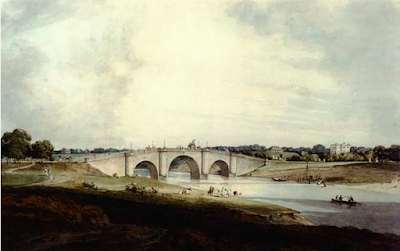
Barna Bridge at Benaras, painting by Col. Robert Smith, 1810 A.D.
Shortly after her house arrest she sought permission from Bir to relocate from Ramechap to Benaras (Varanasi) where she would spend time in prayers and charitable work. This request was granted and she stayed at Benaras from 1886 A.D. to 1903 A.D. In 1889 A.D. she bought a house from an Englishman near Barna Bridge over the Varun River. Many devalayas and temples built in Benaras are attributed to her largess. Her young son Bhupatindra and her daughter accompanied her to Benaras. Bhupatindra was raised there and he married, had children and eventually died there, never to return to Nepal. Prince Bhupatindra’s daughter Bijeshwori Rajya Luxmi Devi was given in marriage in 1922 A.D. from Nepal to Raja Ramanuj Saran Singh Deo of Surguja State (in today’s Chattisgarh) in India as his second wife. He was the last raja until Indian Independence.
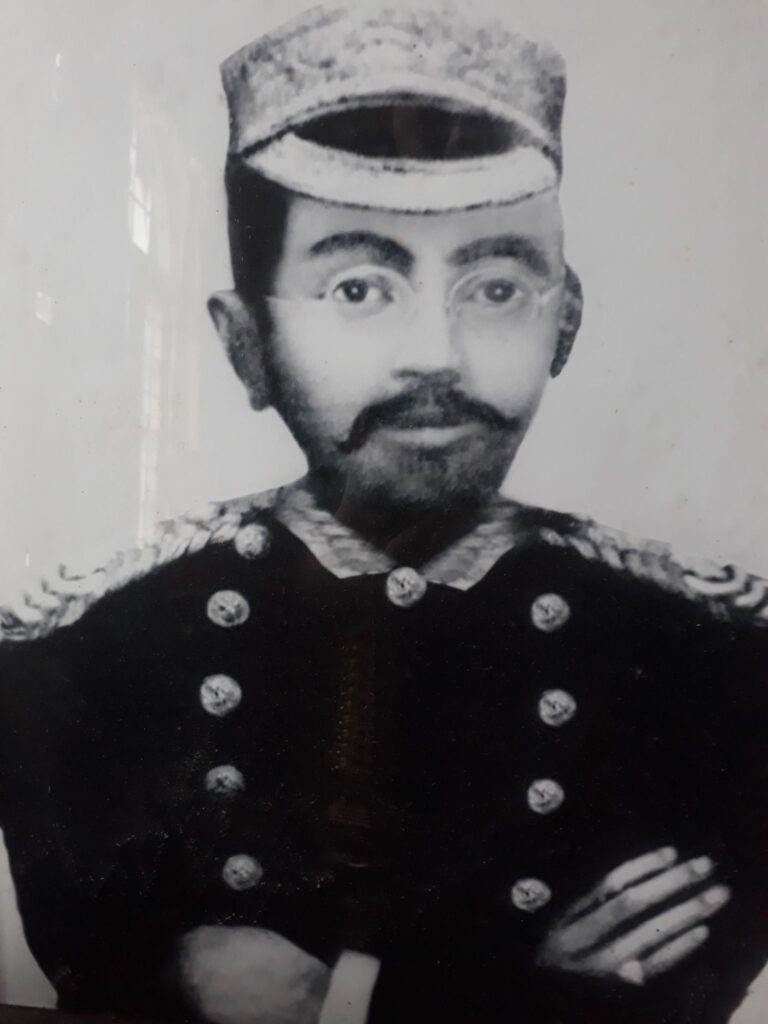
Bhupatindra Bikram, son of Deep Kumari
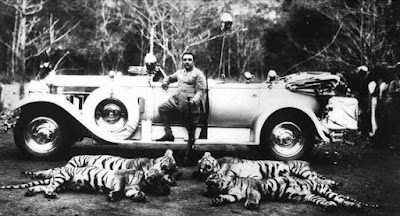
Raja Ramanuj Saran Singh Deo of Surguja State, Bhupatindra’s son-in-law
As both Bagh ki Kanchi Maiya and her cousin Khadga Shumsher were in exile in India contemporaneously, it would be great to find out whether they actually corresponded or even met with each other. Perhaps such an act would be considered a folly by the government in Nepal and it would certainly not be encouraged. Deep Kumari’s younger grand-daughter Gujeshwori Rajya Luxmi, daughter of son Bhupatindra Bikram, was given in marriage to Lt. General Tunga Shumsher, a son of General Khadga Shumsher to cement a historic tie-up between these protagonists.
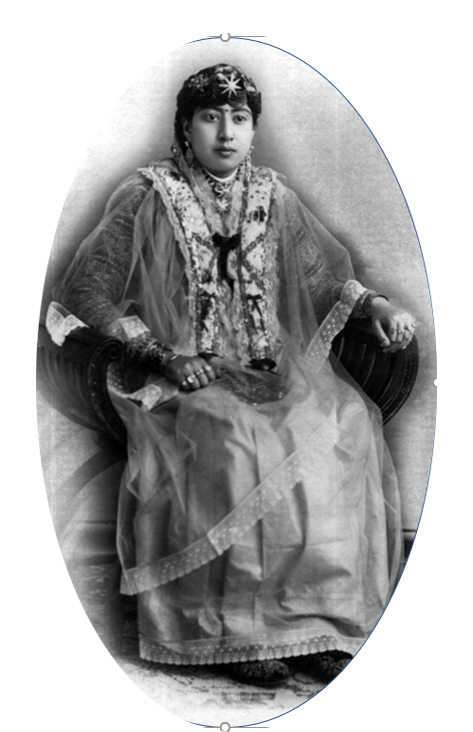
There is an instance in history that brought together Deep Kumari and her estranged cousin Bir in later years. Maharajah Bir Shumsher travelled to Benaras to perform a ritual of atonement, the Gotra Hatya Chyama Yagna under supervision of Pandit Shiromani Acharya Dixit. Bir reconciled with his cousin and gifted Princess Deep Kumari 50 bighas of land as birta grant in Kalaiya, Bara District. She would later build Barewa Durbar there with the assistance of Maharajah Dev Shumsher who succeeded Bir. Dev would offer her 26,000 cubic feet of wood to build her palace. He also presented her with 2 elephants, one female Sagun Kalli and one male, Narayan Prasad.
Deep Kumari had raised a few dola girls from Thakuri families in Nepal at her residence in Benaras as was customary of the time, for marriage with her son Bhupatindra Bikram. Only one of them could be selected for her son, of course. It is recorded that two of these girls were given in marriage to her family members. One was married to the maharajah of Nepal Chandra Shumsher as his second wife after the death of his first and the other to a son of Deep’s half-brother General Padma Jung Rana, now residing as an exile at Allahabad.
Bir Shumsher died in 1901 A.D. and Dev Shumsher was removed from office only after 3 months. In 1903 A.D. the new maharajah and prime minister Chandra Shumsher finally allowed Deep Kumari to return to Nepal and once again stay at her family residence at Bagh Durbar with all her perks and privileges restored. She was glad to be rejoined with her elder sister Lalita Rajya Luxmi Devi the Queen Mother. She had come full circle in the journey of her eventful life. She passed away peacefully in 1916 A.D. at the ripe old age of 60 years.
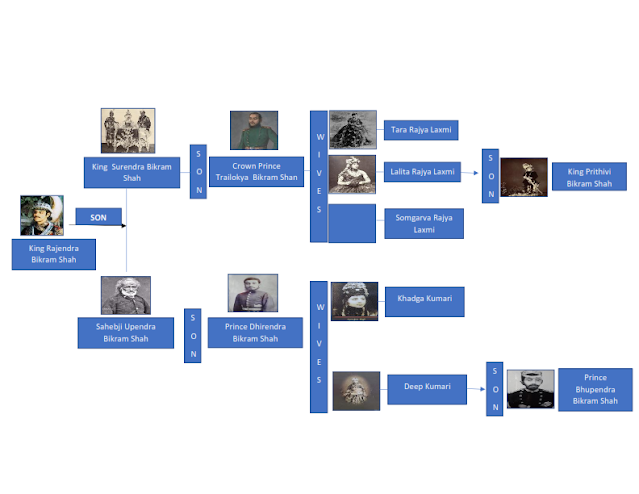
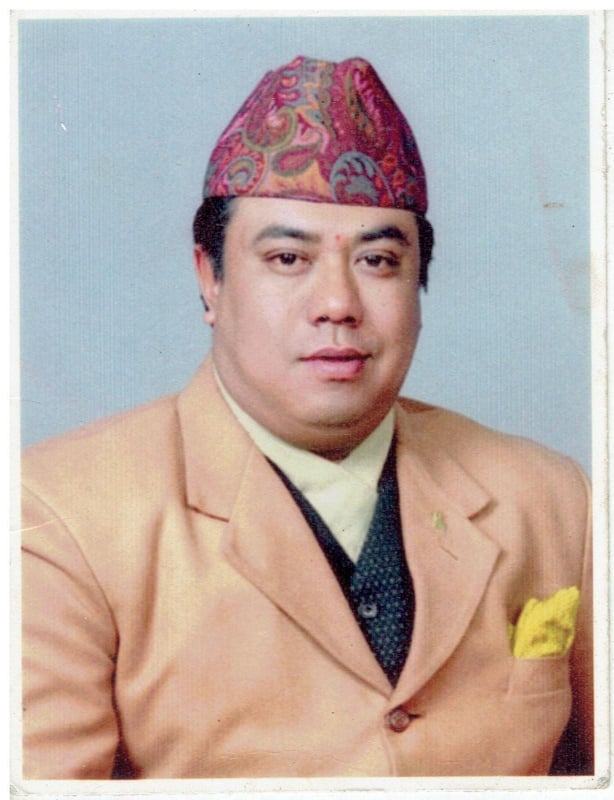
I would like to gratefully acknowledge the invaluable contribution to my story made by the descendant of Bagh ki Kanchi Maiya, Shri Binaya Bikram Shah, President of the Steering Committee of Bagh Guthi established by Shree 5 Mahila Sahebjiu Upendra Bikram Shah; President, International Soft Tennis Federation (ISTF) that established him as the first Nepalese in the highest rank in Nepalese sports history; Former Vice President and Secretary General of ISTF; President, Nepal Soft Tennis Association.


